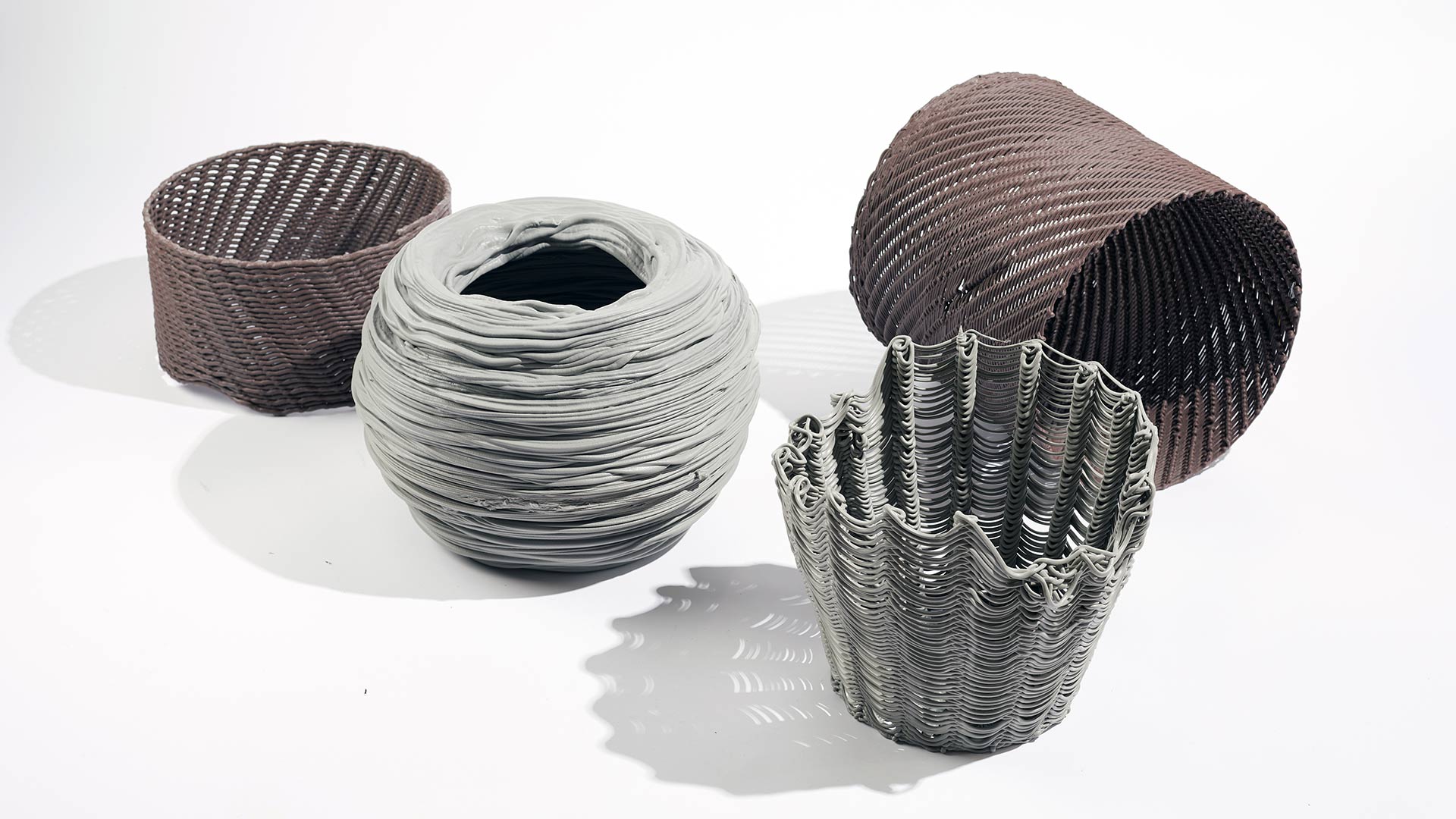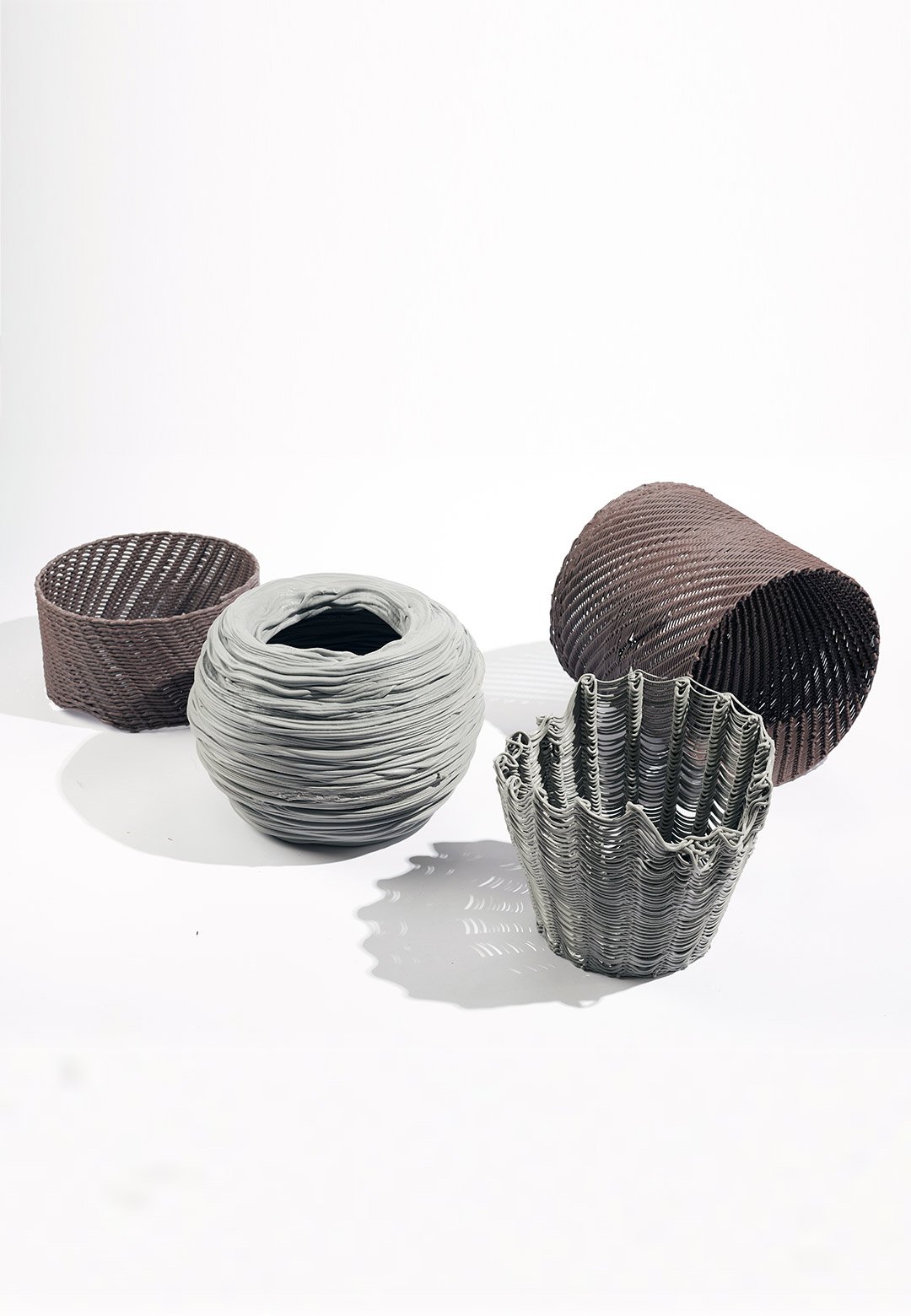Can contemporary mechanisms such as 3D printing be informed by traditional craft techniques such as knitting, crocheting, and weaving? With the objective of exploring the plausible juxtaposition of practices separated by eras, British designer Gareth Neal joins forces with Dutch studio, The New Raw. Together, the design team pushes the boundaries of what 3D printing is, evolving it further to breathe life into the Digitally Woven series. The objects constituting the collection are made out of three times recycled polymer, which is printed in loops as opposed to layers. A chair design dubbed 'Loopy' and vessels emulating woven baskets lay the foundation for the ongoing series. Speaking about the inspiration behind Digitally Woven, the designers relay, “creating a new context for digital manufacturing within the field of crafts was our main pursuit.”
Based in East London, UK, Gareth Neal studio’s ethos revolves around the amalgamation of traditional techniques and digital technology. Craftsmanship and quality, two essential elements of their work, are achieved through collaborations with craftspeople and designers, hands-on making processes, and respect for the environment as well as traditions.
On the other hand, The New Raw is a research and design studio based in Rotterdam, the Netherlands, led by architects Panos Sakkas and Foteini Setaki. The practice specialises in digital craftsmanship techniques and robotic manufacturing processes employing plastic waste. A knack for innovative design delineates the approach of both practices—Neal’s inclination towards heritage and The New Raw’s expertise in transforming waste come together against a backdrop of technological innovation and digital design, breathing life into their collaborative venture, the Digitally Woven. “With our work, we seek to tangibly express the transition from traditional to digital, and from virtual to physical with a twist,” shares Setaki, co-founder of The New Raw. “In this way, we develop a new formal language of digital craftsmanship that combines traditional handwork with digital fabrication,” she adds.
This creative alliance commenced as an exploration of how properties, efficiency, and sustainability of additive manufacturing can be enhanced through the incorporation of traditional crafts, into a digital process. The resultant objects and digital fabrics are composed of a recycled polymer with intense tactility. The robot manages to print in space—not in layers—while still creating structural pieces. Utilising the three times recycled polymer—a feat usually not attempted due to the materials being inherently unstable nature—ensures less material consumption and a variety of interesting forms for the sustainable designs.
The 'Loopy' chair is the first piece of furniture design that has come out of the Digitally Woven study. The lounge chair, suitable for both indoor and outdoor environments, is formed as a folded digital fabric achieved by printing a series of interlocking loops that render the required stability to the product design. “Merging influences from traditional crafts with existing failures due to material properties and printing settings opens a new world of materialities. We use analogue knitting techniques in homage to the continuous thread of the manufacturing process, testing them out on large and hard furniture surfaces,” the product designers explain.
The furniture designers are currently working on a limited edition series of the 'Loopy' chair, which will be numbered, signed, and available for sale. Furthermore, they continue to probe more furniture applications of the Digitally Woven collection. Working with digital tools at different stages of creation brings numerous possibilities to the table—possibilities for an entirely new outcome for this material process which could influence product, architectural facades and forms, sculpture and surface design. Interweaving the best of innovation and heritage, the team yield objects that look ahead, while being reminiscent. Elucidating the philosophy that fuels the project, Neal shares, “Willing to diverge from traditional hand tooling, and experiment with materials that do not yet have a historical context within the world of traditional craft, i.e., plastic waste, can push the field of craft into new areas and combine years of material knowledge and hand making skill into a digital field.”






 Sign in with email
Sign in with email










What do you think?